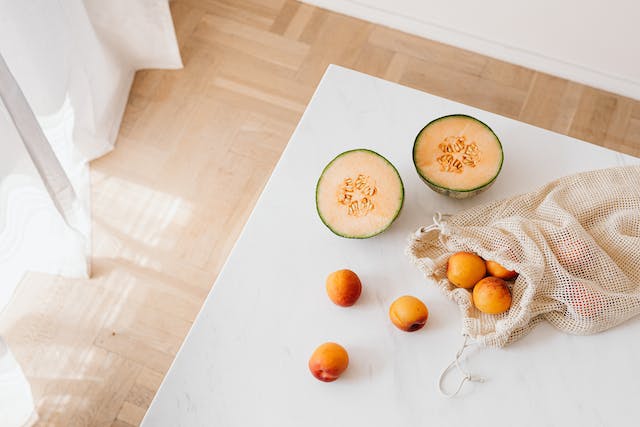
Designing an eco-friendly kitchen is a way of life that promotes a healthy environment, not merely a fad. You can lessen your influence on the environment and design your kitchen to support sustainable practices by making thoughtful decisions. Let’s look at some doable ideas for turning your kitchen into an environmentally friendly sanctuary.
Sustainable Storage Solutions: Embrace the Beauty of Glass Jars
Deciding to use glass jars as your main storage option can revolutionize how you design an environmentally friendly kitchen. Glass containers don’t contain any dangerous chemicals that might contaminate your food, unlike plastic ones. Glass’s transparency makes it simple to see what’s within, reducing food waste and promoting better pantry organization. Invest in a range of sizes to hold various culinary components, such as spices and grains. Because glass jars are infinitely recyclable, they not only improve the look of your kitchen but also support a circular economy. By making one easy change, you can drastically reduce the amount of single-use plastic containers you use in your kitchen and get closer to a more sustainable one.
Culinary Consciousness: Adopting a Plant-Based Diet
Changing to a plant-based diet is one of the most effective ways to reduce the environmental impact of your kitchen. Because the manufacturing of plant-based meals is frequently more sustainable and uses fewer resources, diets heavy in plant-based foods often have a smaller carbon footprint than diets rich in meat. Discover the varied world of plant-based cuisine and add a range of grains, legumes, fruits, and vegetables to your diet.
The Revolution of Beeswax Wraps: Ditching Plastic Wrap for Good
Beeswax wraps are an environmentally beneficial substitute for conventional plastic wraps. These wraps are a natural and recyclable method to cover and preserve your food since they are made of cotton that has been impregnated with beeswax, jojoba oil, and tree resin. Your hands’ warmth aids in shaping the wrap into the correct shape and forms a seal that keeps food fresh. Because they are washable and have a one-year shelf life, beeswax wraps help you cut down on the amount of single-use plastic wrap you use. Additionally, since they are biodegradable, the environmental effects of your kitchen trash will be kept to a minimum. You can help reduce plastic pollution in our seas and landfills by adopting one easy change, in addition to making your kitchen more sustainable.
Sustainable Sips: Choosing the Right Reusable Water Bottle
Getting rid of single-use plastic water bottles is an essential first step toward a kitchen that is eco-friendly. Invest in a high-caliber reusable water container constructed of glass or stainless steel. Not only are these materials strong, but they also don’t contain any dangerous chemicals as certain plastic bottles do. You can lessen the amount of time you spend on throwaway products and the total demand for plastic manufacture by carrying a reusable water bottle.
Energy-Efficient Appliances: A Greener Kitchen Makeover
Making the switch to energy-efficient equipment is a big step in designing an environmentally friendly kitchen. Seek for appliances that satisfy stringent energy efficiency standards, such as those with high Energy Star ratings. These equipment, which range from dishwashers to refrigerators, lower your total energy usage as well as your utility costs. Think about investing in smart appliances that adjust their energy use to your unique requirements. This technical development reduces needless energy loss and enables more accurate control.
Zip Lock Bags Reimagined: Embracing Reusable Silicone Storage
Compostable ziplock bags are a wonderful addition to your kitchen when single-use ziplock bags are retired. These food-grade silicone bags provide a long-lasting and environmentally responsible alternative for storing and preserving your food. They are readily cleaned and reused, and they are leak-proof and airtight. Different-sized reusable silicone storage bags are available to meet a range of storage requirements. These bags provide a flexible and eco-friendly way to pack food on the road or store leftovers in the refrigerator. Making this change gives your eco-friendly kitchen a creative touch while also doing away with the need for single-use plastic bags.
Conclusion
In conclusion, creating an eco-friendly sanctuary in your kitchen requires thoughtful decisions about equipment selection, food preparation, and storage options. No matter how little, every action adds up to a more sustainable way of living. Accepting these adjustments not only makes your kitchen greener for you but also encourages others to join the movement for a healthier Earth. Improve your cooking area, lessen your impact on the environment, and feel good about having a kitchen that supports your sustainability goals.


